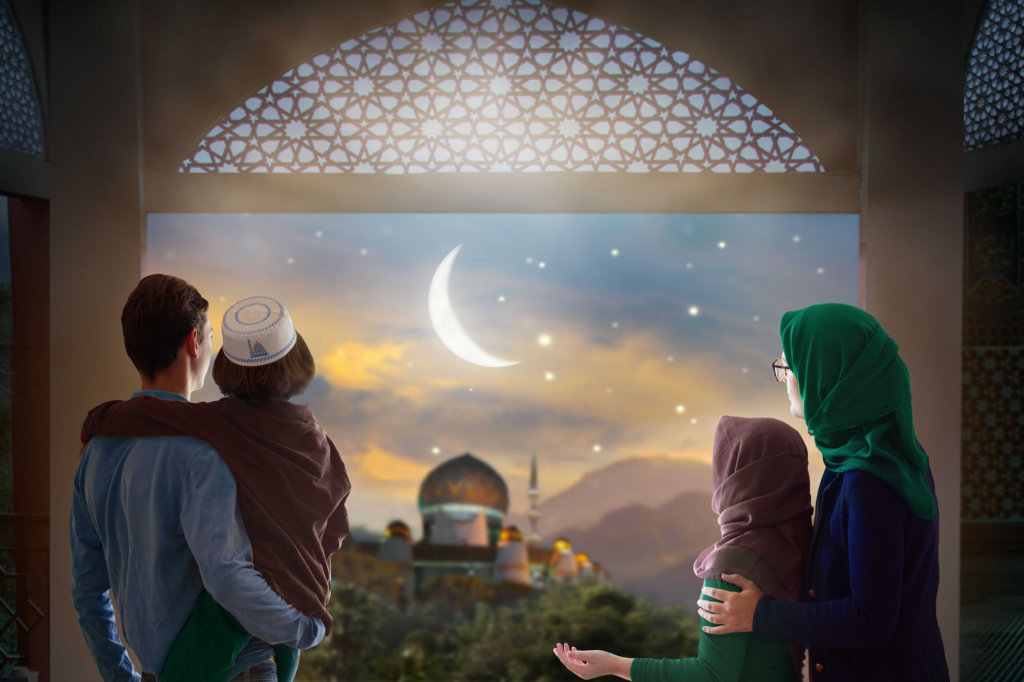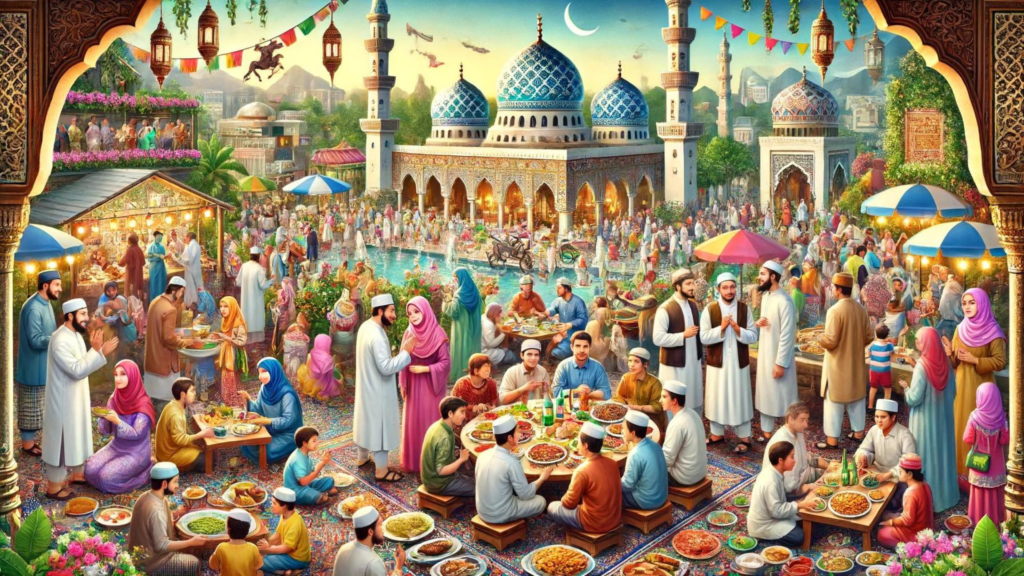Eid al-Fitr, also known as the “Festival of Breaking the Fast,” is a significant celebration for Muslims around the world, marking the end of Ramadan. This festive occasion emphasizes the spirit of togetherness, gratitude, and joy. In this blog post, we will explore the traditions, rituals, and significance of Eid al-Fitr, highlighting how it brings communities and families closer.

The Essence of Eid al-Fitr
Eid al-Fitr is celebrated on the first day of Shawwal, the month following Ramadan. It is a time for Muslims to express gratitude to Allah for the strength and patience shown during the month of fasting. The festival is characterized by communal prayers, feasting, and acts of charity.
Traditions and Rituals
- Chaand Raat (Moon Night):
The festivities begin with Chaand Raat, where families gather to sight the crescent moon that marks the end of Ramadan. This night is filled with excitement as people shop for new clothes and gifts, preparing for the celebrations ahead1. - Eid Prayer:
On the morning of Eid, Muslims gather in mosques or open fields to perform a special prayer known as Salah al-Eid. This prayer consists of two units (rakats) and is often followed by a sermon (khutbah) delivered by an Imam2. After the prayer, it is customary to greet one another with “Eid Mubarak,” which means “Blessed Eid.” - Acts of Charity:
One of the core aspects of Eid is giving to those in need. Muslims are encouraged to give Zakat al-Fitr, a form of charity meant to ensure that everyone can partake in the festivities. This act fosters a sense of community and compassion among individuals3. - Feasting and Celebrations:
Food plays a central role in Eid celebrations. Families prepare traditional dishes such as Sheer Khurma, biryani, and various sweets. Sharing meals with family and friends strengthens bonds and creates cherished memories4. - Cultural Practices:
Different cultures have unique ways of celebrating Eid. In many regions, children receive Eidi (money or gifts) from elders, while families may visit graves to honor deceased loved ones6. Adorning new clothes and applying henna designs are also common practices that add to the festive spirit.

The Importance of Togetherness
Eid al-Fitr serves as a reminder of unity and togetherness within families and communities. It encourages forgiveness, reconciliation, and strengthening relationships. The festival is not just about personal enjoyment; it emphasizes sharing joy with others—especially those who are less fortunate.
FAQs
Q: What does “Eid Mubarak” mean?
A: “Eid Mubarak” translates to “Blessed Eid,” a common greeting exchanged among Muslims during this festive occasion.
Q: How long does Eid al-Fitr last?
A: Eid celebrations typically last for one day but can extend into several days depending on cultural practices and local customs.
Q: Is Eid al-Fitr celebrated differently around the world?
A: Yes, while the core elements remain consistent—prayers, charity, and feasting—various cultures have their unique traditions that enrich the celebration.
External Link
For more insights on Eid traditions around the world, visit BBC Newsround, which provides an overview of how different cultures celebrate this joyous occasion.
This blog post encapsulates the essence of Eid al-Fitr while providing valuable information that resonates with readers looking to understand and celebrate this important festival!

You may also like :
Delicious Sheer Khurma: A Festive Vermicelli Delight
What Are the Benefits of Using a Standing Desk?
How to Effectively Manage Time While Working from Home – 2025
What are the Advantages of Using Natural Cleaning Products
How to Choose the Right Plant for Office Space: A Comprehensive Guide
We’d love to hear your thoughts! Share your opinion in the comments!










Great post! I really enjoyed your article.Thanks for sharing this.
Thank you so much! We’re glad you liked it. You can check out more interesting stories on our website: https://thestoryseeds.com/ 😊 Stay tuned for more!